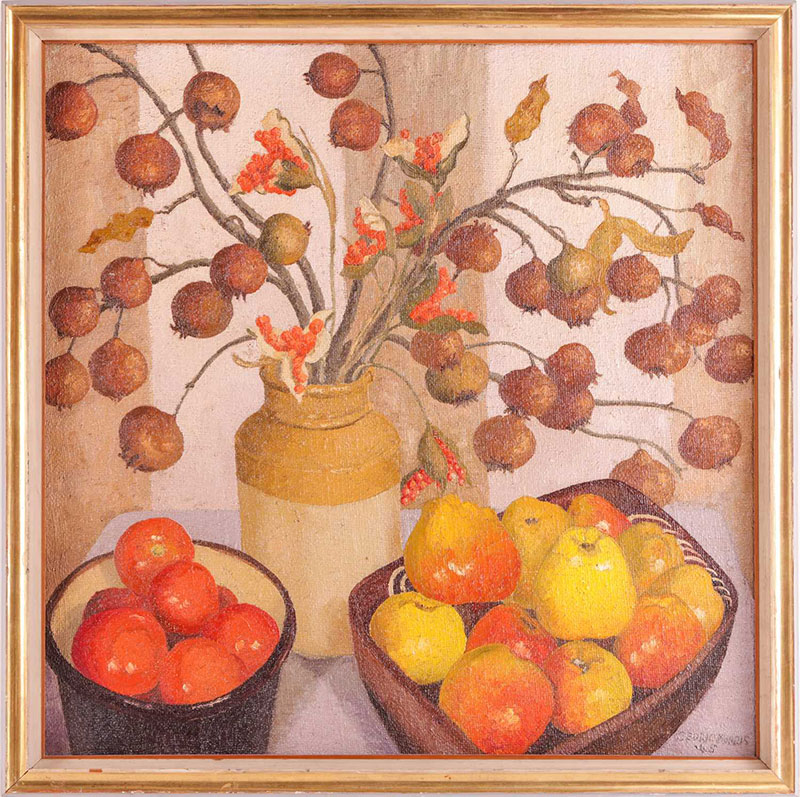Who Were the School of East Anglian Artists
The 1930s was a decade of artistic experimentation, with artists consciously pushing new frontiers
28/05/2025
East Anglia is, on the face of it, an odd place to have a thriving art scene. Famed more for its football teams, farming, and Alan Partridge, the county is almost completely different to other UK art capitals like London. But, with its sweeping landscapes, proximity to the sea, and largely untouched natural beauty, it is perhaps not unusual that it has attracted many artists over the years.
One of the first artists worth touching on is Cedric Morris. Best known for his idiosyncratic, bold flower paintings, he had a fascinating life before moving to East Anglia: he trained horses for the front line in WWI before being discharged in 1917, briefly attended the Royal Academy of Music to study singing, he was an experimental breeder of plants, and travelled extensively. But it was the founding of the East Anglian School of Painting and Drawing alongside his partner Arthur Lett-Haines in 1937 which had the biggest impact on the region’s art scene. The school’s first exhibition was held in the following December, and despite burning down only two years later – along with a large number of Morris’ own paintings – the school was re-established in Hadleigh.
Maggi Hambling ‘Summer Wave III’ 2011
The 1930s was a decade of artistic experimentation, with artists consciously pushing new frontiers and exploring different methods and forms. As such, it would be expected that the art institutions of the time were much the same – but The East Anglian School of Painting and Drawing took this to quite the extreme. Treating itself as more of an ‘artistic community’ than a strict school, the institution was anti-hierarchical and anti-patriarchal, with a distinct lack of rules. It even went as far as encouraging artistic – as well as sexual – liberation for its students.
One of the school’s first students was Maggi Hambling CBE, who joined at the age of 15. Often described as an ‘uncompromising’ artist, she is regarded as one of Britain’s greatest and most prolific living artists. Her work is diverse, often featuring nature, such as the North Sea which she often returns to, but also migration, cruelty towards animals, the effects of climate change and the war in Syria. Her work notably often features deceased loved ones – including paintings of them in their caskets. She painted her own mother in her casket shortly after she died, and, having been mentored by Lett-Haines at the school, she painted him after he had died, too.
Mary Fedden R.A. ‘Cats and a Pineapple’ 1981
Another famous student of the school was Lucian Freud, who is alleged to have started the fire in 1937 by smoking. The grandson of Sigmund, it is perhaps typical that Freud’s early work as a painter was influenced by surrealism. He is now known as one of the foremost 20th-century English portraitists, with his later paintings in particular being lauded. Over his 60-year career, Freud mostly painted friends and family in stark, unsettling paintings, and was famed for demanding that his subjects sit for hours for him, often naked. This work tended towards realism and generally examined his relationship with his subjects. Freud was immensely successful in his lifetime and often sold his paintings for enormous fees – also setting the record for the highest fee set by a living artist in 2008.
Whilst not an alumnus of The East Anglian School of Painting and Drawing, Edward Seago is one of the most famous artists to have come from Norwich. Despite briefly studying with Sir Alfred Munnings, he is generally thought of as a self-taught artist. Seago is known best for his oil paintings of beaches and street scenes, as well as his watercolour works, with the bulk of his work being characterised by a grounded sense of realism and colour modulation in a late impressionistic style. Seago is another artist to have enjoyed great success in his lifetime – despite being physically unfit to serve during WWII, he was enlisted to develop camouflage by the Royal Engineers, and was rewarded with the honorary rank of Major in 1944 for his work. He also saw a great interest in his work from the British Royal family, with his work being collected by several Royals including Queen Elizabeth II, the Queen Mother and Prince Philip among others.
Edward Seago 'Cottages on the Rise, Norfolk'
The final artist worth highlighting here is Edward Bawden CBE. Notably, Bawden was neither from, nor did he study in Norwich, actually hailing from Braintree, Essex. However, he created a striking series of paintings about Norfolk. He worked across several strands of art, notably illustrating several books in pen and ink, as well as occasionally linocut, lithography and stencil. Often creating work around leisure, nature and architecture, he is perhaps best remembered today for his commercial work for companies like Twinings and Fortnum & Mason, and his linocuts depicting everyday England, which is fitting for an artist who pushed the boundary between fine art and commercial art.
READ MORE
How Can I Sell an Art Collection?
A Guide to the work of Sandra Blow
A Guide to the work of Mary Fedden
Are you considering selling any art created by an East Anglian artist?
With access to a huge global audience of known buyers, Dawsons can secure the highest price for you.
Get in touch with an expert Valuer for confidential sales advice, we would be delighted to help:
0207 431 9445 / info@dawsonsauctions.co.uk



